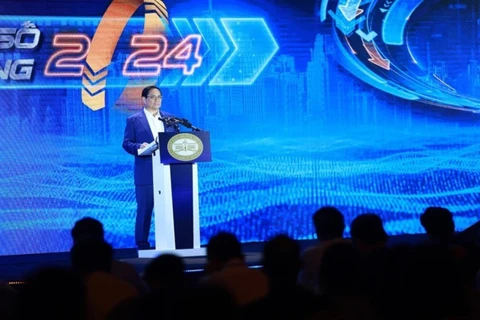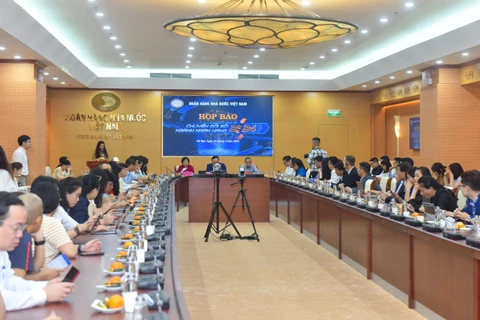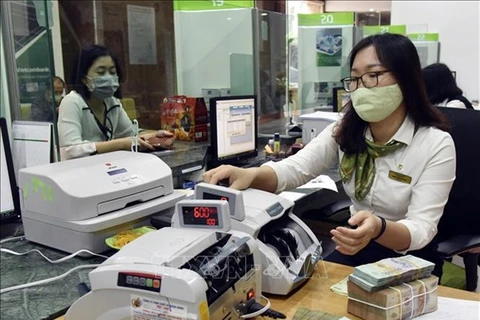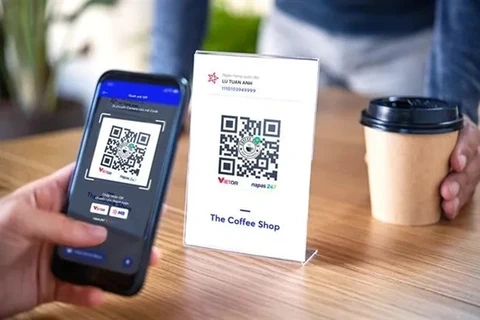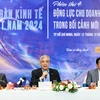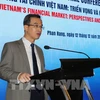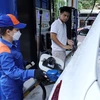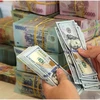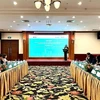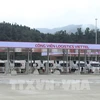
Hanoi (VNA) - “The banking sector will continue to closely collaborate with various ministries and sectors to connect, expand, and develop the digital ecosystem to other sectors of the economy. This places citizens and businesses at the center to provide seamless, secure, cost-effective, and transparent services,” said Nguyen Thi Hong, Governor of the State Bank of Vietnam, at the 2024 Banking Digital Transformation event held on May 8 in Hanoi.
“The banking sector will continue to closely collaborate with various ministries and sectors to connect, expand, and develop the digital ecosystem to other sectors of the economy. This places citizens and businesses at the center to provide seamless, secure, cost-effective, and transparent services,” said Nguyen Thi Hong, Governor of the State Bank of Vietnam, at the 2024 Banking Digital Transformation event held on May 8 in Hanoi.
Speaking at the event, Nguyen Thi Hong emphasized that promoting digital transformation is a major policy of the Party, the Government, and the State Bank of Vietnam.
The central bank has issued the Digital Transformation Plan for the banking sector until 2025, with an orientation towards 2030 (Decision 810), focusing on putting citizens at the center and measuring the effectiveness of digital transformation by the convenience and utility it provides to users.
To date, more than 87% of adults have payment accounts at banks, and many banks have over 95% of transactions processed through digital channels. The number of mobile and QR code payment transactions has grown by more than 100% annually from 2017 to 2023.
In addition, banking technology infrastructure is regularly upgraded to ensure continuous, smooth, and secure operations.
The interbank electronic payment system processes an average of 830 trillion VND (approximately 40 billion USD) per day. The financial switching and electronic clearing system processes have an average of 20-25 million transactions per day.
At the event, Lieutenant General Nguyen Duy Ngoc, Deputy Minister of Public Security, affirmed that the police force is ready to collaborate with banks in digital transformation to best serve the public and businesses.
Ngoc said that the Ministry of Public Security has issued personal identification numbers to 100% of citizens with over 104 million data entries, 86 million citizen ID cards for all eligible citizens nationwide, and 75.16 million electronic identification records, with 53.88 million electronic identification accounts activated.
He added that in 2024, under the Prime Minister's directive, the priority is to enhance social security payments through accounts to ensure transparency and prevent state budget losses.
Currently, 2 million people have accounts and prefer to receive payments through accounts totaling over 4,500 billion VND (approximately 177.1 million USD).

At the event, Dinh Thi Thai, Deputy General Director in charge of Risk Management at Vietcombank, shared information on the integration of the VNeID application in customer authentication and identification to prevent fraud and scams.
According to Thai, banks have proactively increased the frequency of improving warning methods to advise customers on securing their information and conducting safe online transactions.
At Vietcombank, in close cooperation with the Ministry of Industry and Trade, the Ministry of Public Security, the National Data Center for Population, and the Administrative Police Department (CO6), technical connections with the national population data have been completed, allowing precise citizen and customer identification.

Additionally, integration creates a foundation for building better customer support utilities, including “Online Authentication” or “Multi-dimensional Information Verification”.
For citizens, connecting VNeID authentication on digital banking applications helps provide and share information quickly and conveniently with banks, ensuring safety and security, and preventing information forgery.
This also mitigates risks for transactions by verifying users on the correct device.
In the context of increasingly sophisticated and complex fraud activities, using technology combined with population data and biometric imaging in the VNeID application to authenticate electronic transactions is a highlight in preventing violations in banking transactions./.
